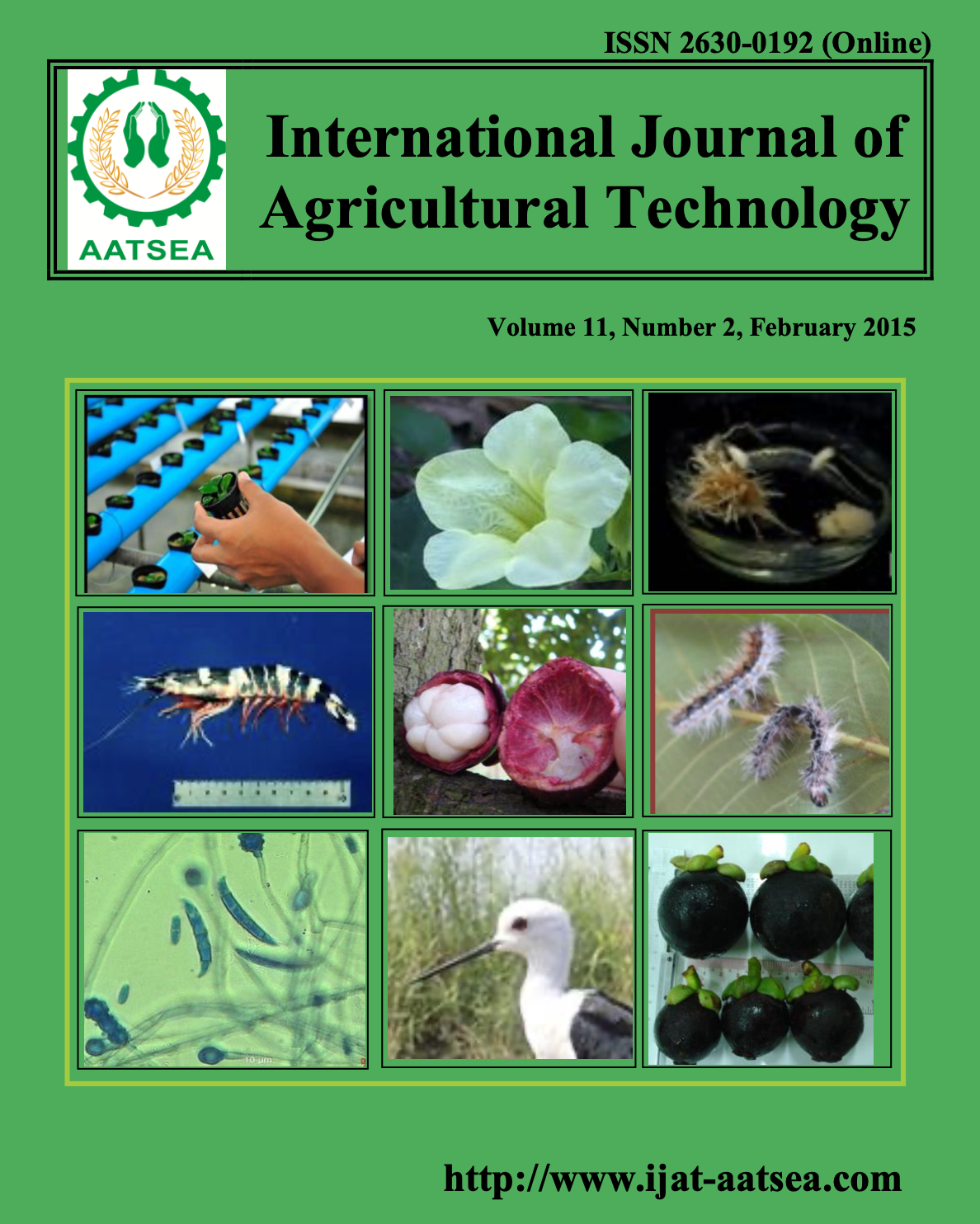Two edible mushrooms’ interaction against Fusarium wilt which caused by F. oxysporum f.sp. lycopersici
Main Article Content
Abstract
F. oxysporum f. sp. lycopersici. Results showed that crude ethyly acetate from Clitocybe sp AJ2-2 gave significantly highest inhibition of 83.90 % for spore production of F.oxysporum at concentration of 1000 ppm. Crude hexane from B. affinis var. maculosus AJ2-3 gave significantly highest inhibition of 76.91 % for the spore production of F.oxysporum at the concentration of 1000 ppm. These investigations are also reported for the first that time that Clitocybe, B. affinis var. maculosus and have shown some antimicrobial substances against fusarium wilt which canused by F.oxysporum. Further investigation would be studies on chemical elucidation of these antagonistic substances.
Article Details

This work is licensed under a Creative Commons Attribution-NonCommercial-NoDerivatives 4.0 International License.
References
Alexopoulos, C. J. and Mims, C. W.(1979). Introductory Mycology. John Wileys and Sons. 632 pp.
Arora, D. (1986). Mushroom Demystified. Ten Speed Press. 959 pp.
Badalyan, S. M., Innocenti, G. and Garibyan, N. G. (2002). Antagonistic activity of xylotrophic mushrooms against pathogenic fungi of cereals in dual culture. Phytopathologia Mediterranea 41:200-225.
Bao, J. R., Fravel, D. R., O’Neil, N. R., Lazarovits, G. and van Berkum, P. (2002). Genetic analysis of pathogenic and nonpathogenic Fusarium oxysporum from tomato plants. Canadian Journal of Botany 80:271-279.
Genpei, Y. and Bao, J. (2008). Agaricus (Iwade 101) Applied research in immune regulation. Shanghai Journal of Preventive Medicine 20:235-237.
Kirk, P. M., Cannon, P. F., David, J. C. and Stalpers, J. A. (2001). Dictionary of the Fungi 9th edition. London: CAB International.
Phillips, R. (1991). Mushroom in North America. Canada: Little Brown and Company limited. pp.62.
Sibounnavong, P. (2012). Screening of Emericella nidulans for biological control of tomato Fusarium wilt in Lao PDR. Journal of Agricultural Technology 8:241-260.
States, J. S. (2004). Mushrooms and truffles of the southwest; Transition zone horticultural institute. America pp. 71.
Xiaoping, L. and Tunyan, W. (2007). Mushrooms of the genus preliminary study. Technology Infomation 2:272.


